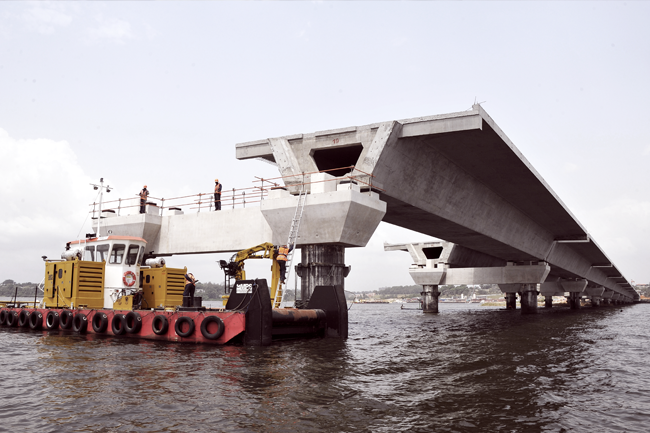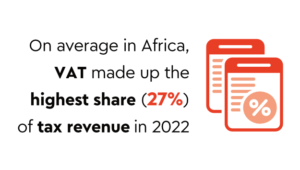The state of a country’s bridges often reflects that nation’s economic prowess. Without these structures, there would be limited access to transport and trade, which would result in patchy distribution of resources and goods. People’s movements would also be restricted.
However, bridges go beyond being socio-economic enablers: while some blend in with the surroundings as a means to get from one point to the next, other structures have become iconic landmarks in their own right and often double up as tourist attractions.
The Victoria Falls bridge is one of Africa’s most recognisable, a parabolic arch across the Zambezi that connects Zimbabwe and Zambia. The multi-purpose rail/road/footbridge dates back to 1905 and is a popular spot for bungee jumping. Nigeria’s Third Mainland vehicular bridge is 11.8 km-long with more than eight lanes, making it the continent’s longest.
Further north, the Stanley bridge in Alexandria, with its imposing neo-Islamic towers at both ends, was the first bridge to be constructed over Egypt’s ocean. Inland, in the DRC, the Matadi suspension bridge in Pont Marechal remains the only fixed crossing over the lower and middle Congo River, 2 800 km away from the next one upstream.
‘There are quite a few new bridges being constructed at the moment in Africa, as the national road networks are expanding,’ says Edwin Kruger, bridge network manager at the South African National Roads Agency (Sanral).
‘Approximately 70% of the current expenditure for bridge infrastructure at Sanral goes towards new bridges and upgrades, such as the capacity improvement of older bridges by adding extra lanes, and the remaining 30% goes towards maintaining existing ones.’
Sanral manages 8 597 bridges and major culverts on national roads in South Africa. Its 2014 annual report states: ‘The number of bridges changes constantly as new bridges and culverts are added and some old structures are demolished or abandoned, or where Sanral has taken routes over from provinces.’
The country has some 100 000 bridges and major culverts, says Paul Nordengen, research group leader at the Council for Scientific and Industrial Research (CSIR).
‘It’s difficult to get an accurate estimate as many district municipalities do not have an inventory of their structures. Most provinces and metros manage a substantial number of bridges. And Spoornet has a large number of structures that do not cross or are crossed by a road,’ he says.
Nordengen adds that in South Africa, the majority of bridges are relatively ‘short’ (less than 20m in length). Five of the largest bridges are situated in the Garden Route, with the imposing Bloukrans arch bridge serving as the continent’s highest at 216m.
In 2011, the average bridge construction cost was about ZAR15 000 per square metre in South Africa. According to Kruger, this has now risen to around ZAR20 000, making the replacement value of a typical 100m-long, 14m-wide bridge around ZAR28 million.
‘Our agreement is that it will enhance regional integration as well as economic development. It will also enhance the free movement of people’
However, this value can vary considerably depending on the overall length, maximum height of the piers and type of superstructure and substructure.
A high-profile upgrade, managed by Sanral, is under way at the Rammotswa bridge across the Notwane river, which forms the border between South Africa and Botswana. It will be reconstructed, allowing the Swartkopfontein border post to remain open all year round. At present the border is forced to close for long periods because the existing concrete drift river crossing becomes submerged and inaccessible during the rainy season.
South African Transport Minister Dipuo Peters said in July 2014: ‘Key to our agreement is that it will enhance regional integration as well as economic development. It will also enhance the free movement of people across our two countries.’
Another such upgrade was announced in December 2014. Construction company Murray & Roberts won the contract to improve the 570 km-long N4 toll road between South Africa and Port Maputo, in Mozambique.
The project, due to be completed in 2016, includes the construction of a new bridge, the extension of an existing one, minor rehabilitation to existing bridges and the construction of six large culverts.
The EU has approved EUR107 million in funding to rehabilitate a road that will connect Liberia to Sierra Leone. Peter Versteeg, the EU head of delegation to Sierra Leone, said in mid-2014: ‘This programme … aims to support the rehabilitation of 100 km of highway and key bridges. The new project aims to boost West African activities, reintegration and trade between Sierra Leone and Liberia.’ The modest gravel road will be paved and bridges along the road replaced, including a hand-pulled ferry with a two-lane bridge.
To ensure public safety, specialist accredited inspectors check bridges regularly (the CSIR recommends every five years). As part of their road rehabilitation programme, Sanral also runs hydraulic inspections on all major culverts and river bridges to monitor flood capacity and, where necessary, enlarge or replace the structures. Road authorities also rely on computerised bridge-management systems (BMS). The CSIR has developed the Struman BMS, which focuses on actual defects and prioritises repairs in order of importance. It has been implemented in Namibia, South Africa, Botswana and Swaziland.
Bridges deteriorate at a much slower rate than roads, according to Nordengen. He says: ‘The majority of roads have a design life of 20 years, while well-maintained bridges should last more than 120 years.’ The main reasons why bridges degenerate include high traffic intensity (the percentage of heavy vehicles passing across), harsh climatic conditions, pollution as well as defects in material, design or construction.
Kruger says: ‘In Africa, we don’t require quite the same level of maintenance as in Europe, the United States and other northern climates where the use of de-icing salts to prevent slippery ice build-up on roads and bridges accelerates the corrosion of steel.
‘We use the same materials and similar design codes as the rest of the world. But we tend to build with more concrete where others might use steel, because we have a massive, ongoing problem with metal theft. Stainless steel handrails and parapets – anything made of metal – gets stolen and needs to be replaced.’
He adds that ‘overheight’ vehicles that hit bridges are another common problem. Trucks higher than 4.3m require a permit but at times underestimate the structure’s height, which generally allows 4.9m to 5m of clearance.
Kruger strongly advocates aesthetic bridge design. He says: ‘First and foremost, a bridge has to fulfil its function, but since it has a 50- to 100-year lifespan, we have to ensure the public is happy with the way it looks. We don’t like ugly infrastructure.’
This way of thinking has already paid off: Sanral projects regularly win major industry awards. The KwaMashu interchange improvement near Durban won first prize in the 2014 Consulting Engineers South Africa awards for being an innovative, cost-effective solution that has reduced traffic congestion and travel time while improving road safety.
‘We tend to build with more concrete where others might use steel, because we have a massive, ongoing problem with metal theft’
Aurecon, the firm behind the ‘diverging diamond’ layout – the first of its kind in the southern hemisphere – was also involved in the construction of the 900m-long Cunene bridge in Angola. The original structure had been destroyed in the civil war and the project team faced challenges that included landmines, floods, bureaucracy and border delays.
The bold Isando pedestrian bridge, dubbed the ‘Walking Wonder’, was commended in the same awards. Engineering consultancy SMEC conceptualised the self-anchored, asymmetrical cable-stayed bridge, which is situated between the Isando railway station and OR Tambo International Airport in Johannesburg, and is used by 9 000 commuters daily.
One of Africa’s largest interchange projects is currently underway at Mount Edgecombe, north of Durban. The ZAR830 million upgrade, undertaken by contractor CMC di Ravenna, will feature a four-level interchange with two viaducts. The larger of the two, measuring 26m in height and 947m in length, will be the longest viaduct in the country.
According to project consultants SMEC South Africa, aesthetics played a vital role: ‘Various options, including the shapes of the piers and the overall visual impact of the systems interchange, were modelled in 3D and discussed.
‘This process was managed so that all parties agreed to these aesthetic decisions early enough in the preliminary design process to avoid abortive work.’
Once the three-year construction project is completed and the traffic becomes free-flowing, the sophisticated Mount Edgecombe interchange will be yet another example of how the building of roads and bridges are a sign of a nation’s economic investment for future generations.
















